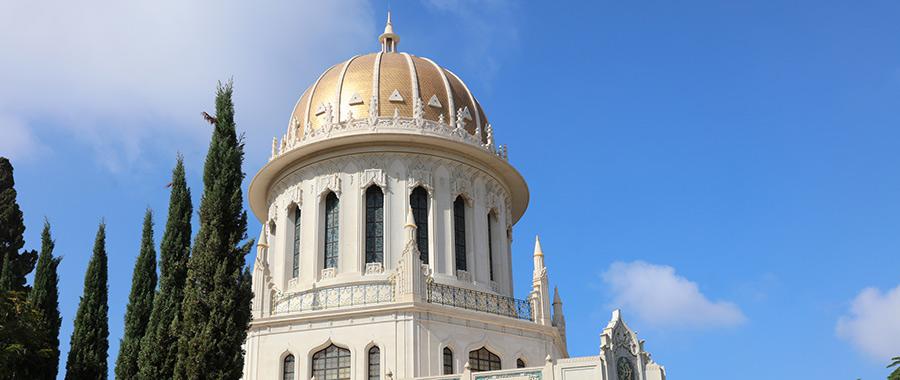The Shrine of the Báb, an architectural masterpiece situated on Mount Carmel in Haifa, Israel, stands as a monumental testament to the Bahá’í faith’s reverence for its central figures and teachings. This shrine is not merely a resting place for the remains of the Báb, but a symbol that embodies the interplay between spiritual ideals and the skilled craftsmanship that brings them to fruition. In this context, the contributions of scholars and craftsmen become integral to understanding and appreciating the full scope of the Bahá’í teachings as represented in this sacred edifice.
The role of scholars within the Bahá’í community cannot be overemphasized. Scholars are custodians of knowledge, devoting themselves to the study and interpretation of sacred texts. Their work encompasses a deep analysis of the writings of Bahá’u’lláh and the Báb, revealing insights that illuminate the faith’s tenets. The meticulous scholarship involved in these studies fosters a greater understanding of the significance of the Shrine itself, which reflects the Bahá’í principles of unity, justice, and the exaltation of the human spirit.
In addition to their interpretative efforts, scholars also engage in comparative studies, contextualizing the Bahá’í teachings within a broader historical and theological framework. Such scholarly endeavors highlight the innovative aspects of the Bahá’í faith, especially the principle of the progressive revelation of religious truths. The multifaceted nature of this scholarship not only enriches the community’s understanding but also facilitates dialogue with other faith traditions, thereby promoting a spirit of interfaith collaboration.
Craftsmanship, on the other hand, serves as an embodiment of the principles espoused by Bahá’u’lláh and the Báb. The Shrine of the Báb is a breathtaking example of how artistry and devotion can be fused to create a sanctuary that invites spiritual contemplation. The craftsmanship involved in its construction showcases not only aesthetic beauty but also a deeper connection to the spiritual significance of the site. Every design element, from the intricate tile work to the meticulously landscaped gardens, reflects the reverence for beauty found in the Bahá’í teachings.
The artisans involved in the creation of the Shrine represent a diverse array of skills. Stone masons, woodworkers, and artisans specializing in mosaic and calligraphy all contributed their talents to the construction of the Shrine. Each craftsman infused their respective art forms with a sense of dedication, mirroring the spiritual aspirations of the Bahá’í community. This collaborative effort among talented individuals crystallizes into an architectural statement, serving both as a homage to the Báb and as a collective manifestation of Bahá’í principles in action.
The confluence of scholarship and craftsmanship at the Shrine of the Báb illustrates a profound synergy. Scholars and artisans, though seemingly disparate vocations, interweave their functions to create a holistic representation of the Bahá’í faith. The scholars provide depth and context to the teachings, while the craftsmen translate these principles into tangible manifestations. Together, they curate an experience for visitors and pilgrims that transcends mere architectural admiration, evoking a profound sense of spirituality and connection.
Visiting the Shrine can be viewed as an educational pilgrimage. Each visitor can engage with the rich layers of meaning embedded within the structure itself. The landscape surrounding the Shrine, meticulously designed and tended to, invites reflection and contemplation. Immersed in this tranquil environment, one can appreciate the spiritual symbolism inherent in the design—Gardens adorned with a variety of flora signify the diversity and unity of humanity, a core tenet of the Bahá’í faith.
Furthermore, the experience of visiting the Shrine is deepened by the narratives that accompany its existence. Stories of the Báb, his life, and his philosophy serve as a backdrop for understanding the significance of this revered site. These narratives, when conveyed through scholarly discourse, enhance the visitor’s comprehension of the broader implications of the Báb’s life and teachings, thus reinforcing the relationship between the spiritual and the material worlds. Visitors leave not only with aesthetic appreciation but also enriched with knowledge and spiritual insights that resonate within their own lives.
In terms of communal involvement, the Shrine serves as more than a destination; it becomes a catalyst for engagement among Bahá’ís and a beacon for those seeking knowledge. Educational programs and workshops centered around the teachings of the Báb and Bahá’u’lláh are often conducted in the vicinity, further fostering a dynamic exchange of ideas and insights. These initiatives ensure that the legacy of the Shrine of the Báb is not static but continuously evolving, engaging new generations in the rich tapestry of Bahá’í teachings.
Ultimately, the Shrine of the Báb stands as a monumental convergence of scholarly pursuit and artistic excellence, encapsulating the ethos of the Bahá’í faith. This synthesis of knowledge and craftsmanship accentuates a critical understanding of the faith’s teachings, making it accessible to wider audiences. In honoring the legacy of both scholars and craftsmen, the Bahá’í community showcases a luminous example of how divine teachings can inspire human creativity and intellectual engagement, offering a pathway toward spiritual enlightenment and unity among diverse peoples.
